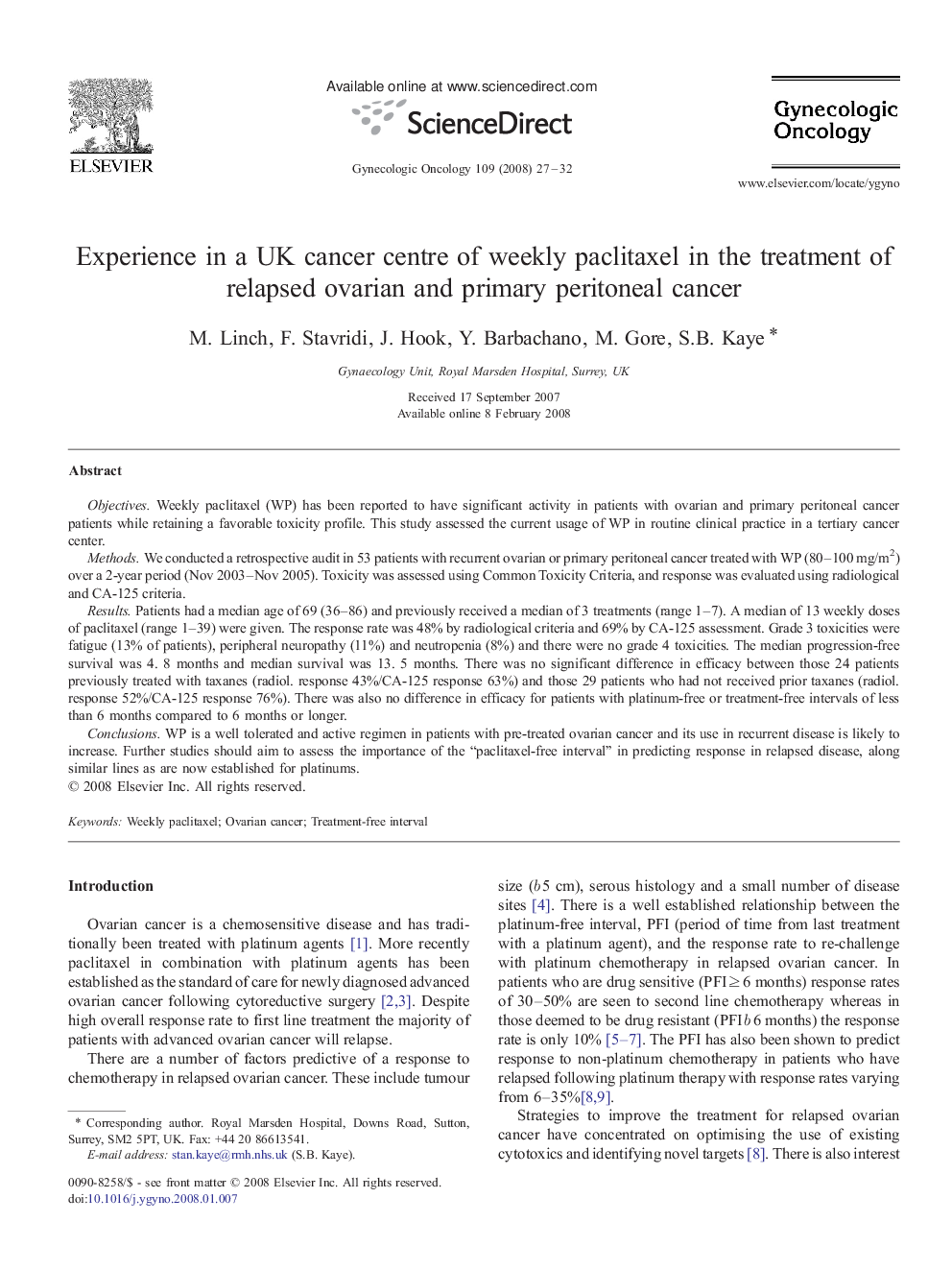| Article ID | Journal | Published Year | Pages | File Type |
|---|---|---|---|---|
| 3944758 | Gynecologic Oncology | 2008 | 6 Pages |
ObjectivesWeekly paclitaxel (WP) has been reported to have significant activity in patients with ovarian and primary peritoneal cancer patients while retaining a favorable toxicity profile. This study assessed the current usage of WP in routine clinical practice in a tertiary cancer center.MethodsWe conducted a retrospective audit in 53 patients with recurrent ovarian or primary peritoneal cancer treated with WP (80–100 mg/m2) over a 2-year period (Nov 2003–Nov 2005). Toxicity was assessed using Common Toxicity Criteria, and response was evaluated using radiological and CA-125 criteria.ResultsPatients had a median age of 69 (36–86) and previously received a median of 3 treatments (range 1–7). A median of 13 weekly doses of paclitaxel (range 1–39) were given. The response rate was 48% by radiological criteria and 69% by CA-125 assessment. Grade 3 toxicities were fatigue (13% of patients), peripheral neuropathy (11%) and neutropenia (8%) and there were no grade 4 toxicities. The median progression-free survival was 4. 8 months and median survival was 13. 5 months. There was no significant difference in efficacy between those 24 patients previously treated with taxanes (radiol. response 43%/CA-125 response 63%) and those 29 patients who had not received prior taxanes (radiol. response 52%/CA-125 response 76%). There was also no difference in efficacy for patients with platinum-free or treatment-free intervals of less than 6 months compared to 6 months or longer.ConclusionsWP is a well tolerated and active regimen in patients with pre-treated ovarian cancer and its use in recurrent disease is likely to increase. Further studies should aim to assess the importance of the “paclitaxel-free interval” in predicting response in relapsed disease, along similar lines as are now established for platinums.
